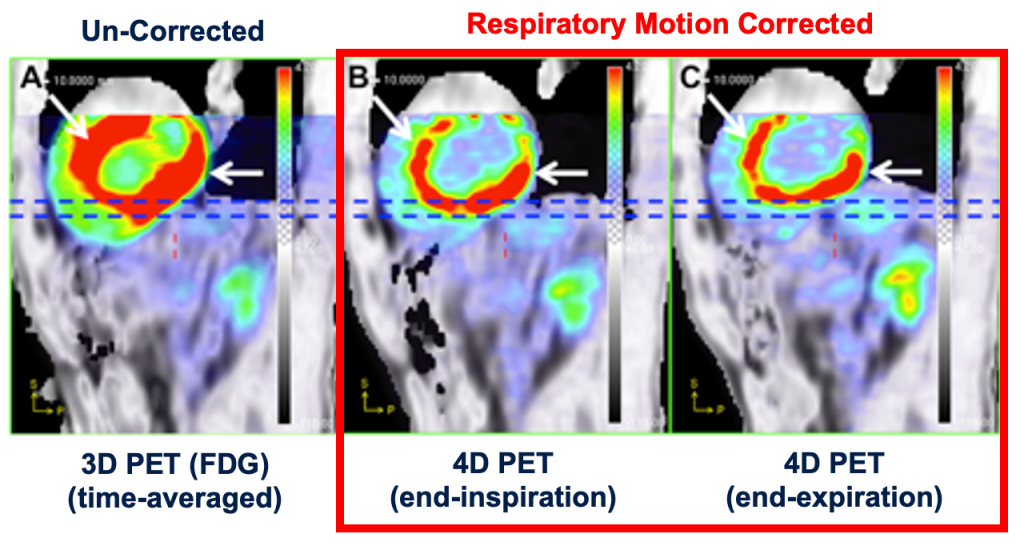
Respiratory/cardiac motion causes blurring artifacts in PET and SPECT images, which results in inaccurate quantification, overestimated target volume, and missing small tumors. To reduce motion blurring artifacts, PET and SPECT data are retrospectively sorted and then reconstructed according to respiratory phases. Irregular breathing causes motion blurring artifacts in 4D PET images. Audiovisual (AV) biofeedback has been demonstrated to improve breathing regularity. Compared with free breathing, we demonstrated that motion blurring artifacts on 4D PET images could be reduced with AV biofeedback in the 4D motion phantom study and the first clinical trial.
Respiratory motion causes misalignments between PET and MR-derived attenuation maps (μ-maps) in addition to artifacts on both PET and MR images in simultaneous PET/MRI for organs such as liver that can experience motion of several centimeters. To address this problem, we developed an efficient MR-based attenuation correction (MRAC) method to generate phase-matched μ-maps for quiescent period PET (PETQ) in abdominal PET/MRI. We demonstrated that a data acquisition of 30 s achieved phase-matched μ-maps when using specialized CIRCUS data sampling and phase-matched μ-maps improved PET quantification significantly.
